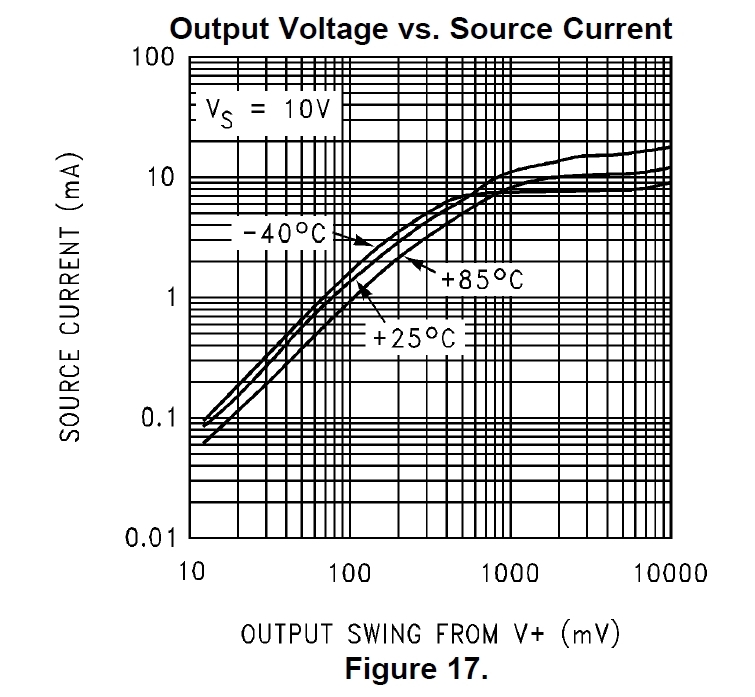Other Parts Discussed in Thread: LM6142,
Hi There,
I have a circuit that uses an LM6132BIM to drive a sine wave into multiple loads.
Op amp supply voltage is +/- 14V
Sine wave is ~ 5VAC , around 7.5V Peak.
At -40 Deg the sine wave has noise at the peak. The data sheet has a figure:
That shows a current limit, but I'm not sure what "Output Swing from V+" means. Is there a relatively straightforward answer for the current limit under these conditions?
This is a circuit and a test that we have used for 10 years, and we have recently had 2 very similar failures.
I've not attempted to simulate the circuit yet.
Thank you,
Jim


